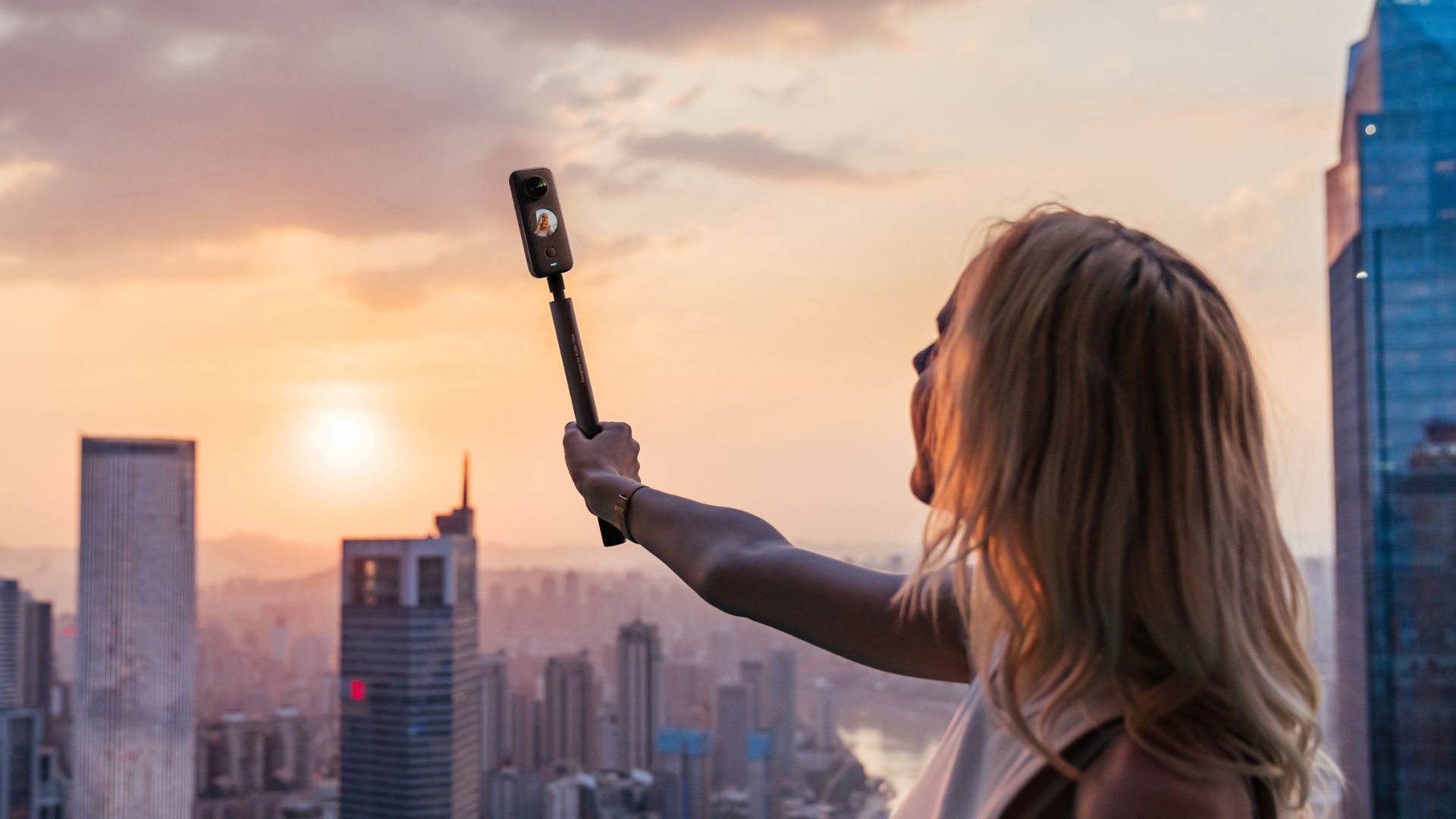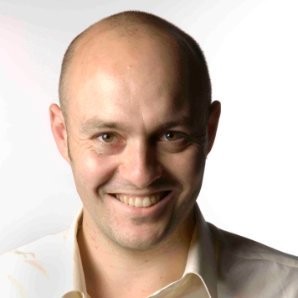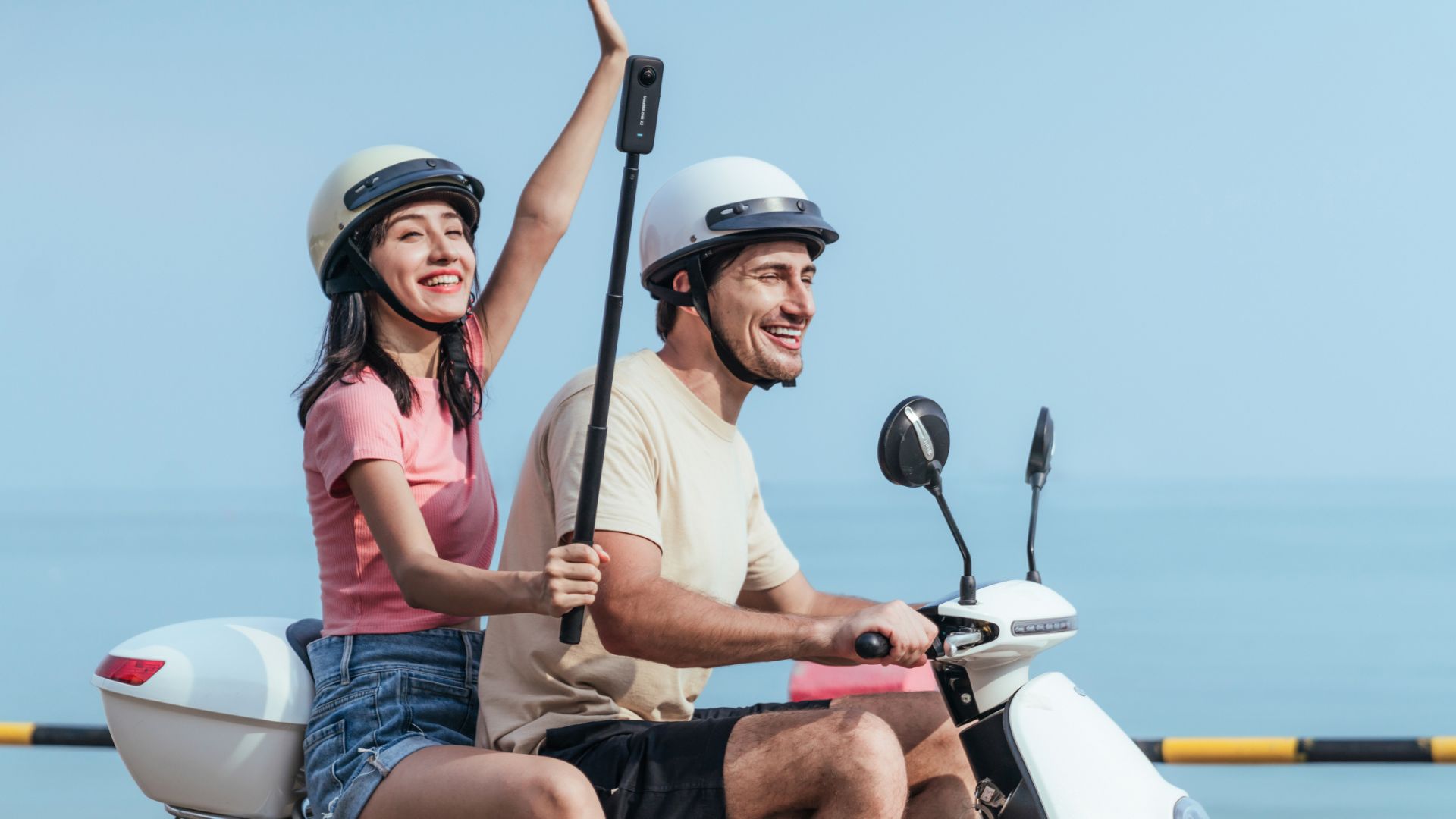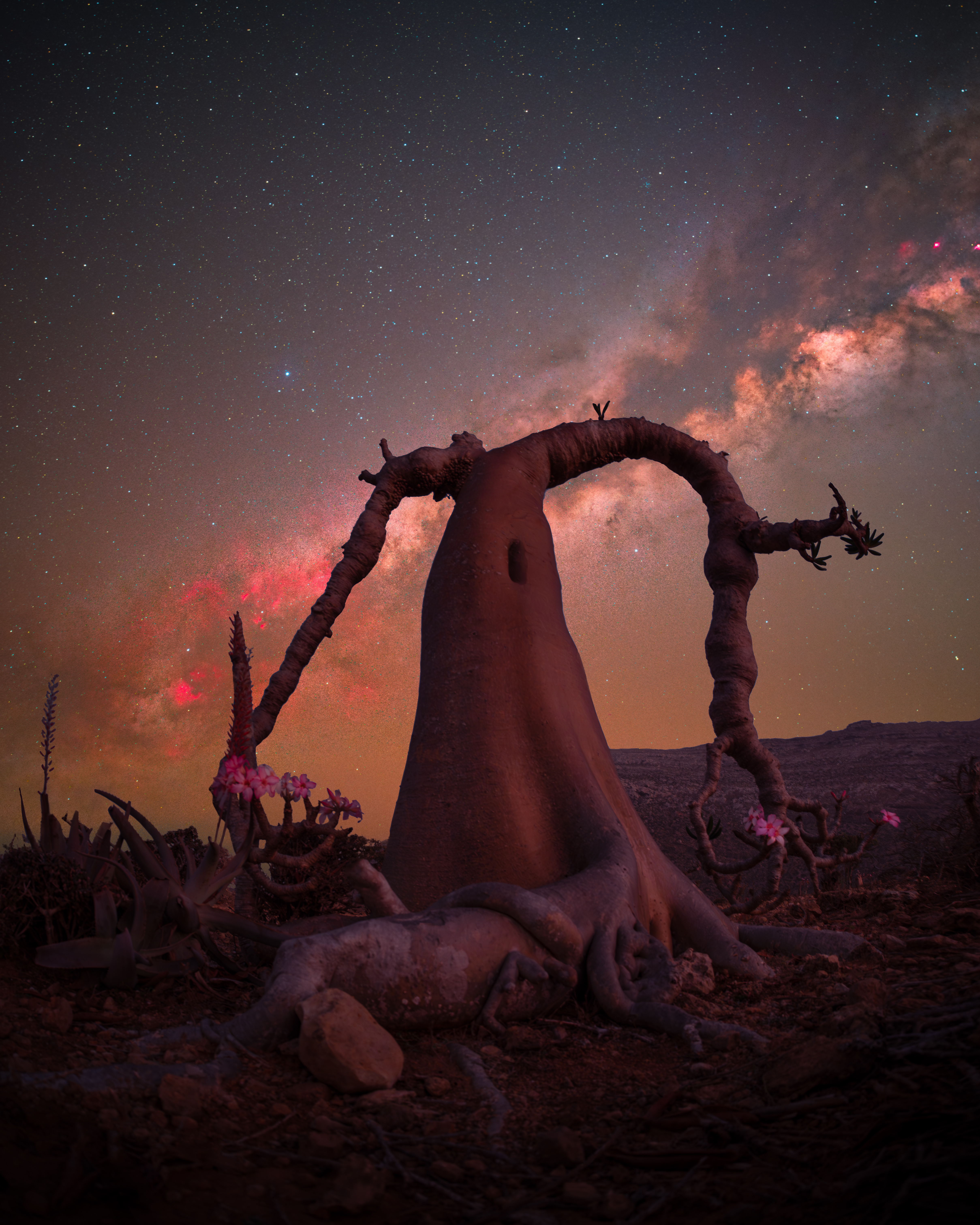What is an invisible selfie stick and how does the magic work?
Everything you need to know about invisible selfie sticks for 360 video and how to get the ‘floating camera’ look.

If you've tried using one of the best 360 cameras you'll know that the problem with getting into this new genre of videography is getting out of it. If you hold the camera you're always going to be in the shot, right? The alternative is to put the camera down on a tripod while you go and hide behind a pillar all the side of the building.
None of that is true any longer, and it's all thanks to the invisible selfie stick. In what seems nothing short of magic, it's now possible to use a 360° camera such as the Insta360 One X2, Insta360 ONE RS Twin Edition and the Kandao QooCam 8K (and, indeed, any 360º cameras by these brands) – for vlogging and general filming without your viewers seeing any clumsy selfie sticks or outstretched arms.
How do invisible selfie sticks work? As with everything in videography these days, this clever special effect is a combination of artificial intelligence and human creativity. Making a selfie stick disappear completely from 360° video may be the product of computational photography, but you can maximize its effect by following some simple techniques.
Here's everything you need to know about invisible selfie sticks, from how they work to how to make them disappear completely from your 360° video.
How do invisible selfie sticks work?
Is each frame airbrushed out of the finished video? Of course not – that would take many hours. Is the selfie stick cloned-out by software or does it rely on an overlap between the angles of view of the two lenses on a 360º camera? It’s actually a bit of both. “The invisible selfie stick effect is achieved through a combination of lens/camera body design, and our proprietary image stitching algorithm,” says Ben Guo, Senior Product Manager of Insta360.
The brand’s 360º cameras have two lenses, which each capture a 200° view and are carefully positioned on the camera body so that the distance between them is sufficient to hide the selfie stick. “The algorithm stitches the two images together, using the overlap between the two images to hide the selfie stick,” says Guo. “The stitching algorithm has been developed and fine-tuned over a number of years to achieve the perfect invisible selfie stick effect.”
Why use an invisible selfie stick?
The answer to this question may appear to be very obvious, but by making a selfie stick disappear opens up a lot of possibilities for more creative kinds of shots when shooting 360° video. Yes, the most attractive reason for using an invisible selfie stick is to make it disappear from the finished content. However, doing so doesn't just get rid of a nasty black selfie stick at the bottom of your video. It also changes your camera’s perspective, in effect making it look like it's floating in mid-air.
The best camera deals, reviews, product advice, and unmissable photography news, direct to your inbox!
It is important to note that with 360 cameras, the selfie stick is not just used for selfies or vlogging. As the camera's two lenses cover a 360° view - you shoot a point-of-view shot at the same time of the scene in front of you (and what is above and below you). In editing, you can effectively change the camera angle - to frame which part of the 360° view you want to show.
How to use an invisible selfie stick
There are two things that have to happen for a selfie stick to be cloned-out. Firstly, the selfie stick cannot be wider than the distance between the two lenses – and ideally it should be a bit thinner. Secondly, the camera should be mounted so that the stick is parallel to the lenses, and stays right between them. “If the stick is not completely in line, it will stray from that overlap between the lenses and become visible in the shot,” says Guo.
Invisibility only goes so far. When using an invisible selfie stick you do have to be conscious of reflections and shadows in the shot, neither of which the software can (yet) remove. Avoid mirrors and don’t walk with the Sun behind you and you should be okay.
How to hold an invisible selfie stick
The main limitation of using an invisible selfie stick is that it doesn't also make your arm or hand invisible. Given that you likely outstretch your arm to hold a 360° camera, the act of digitally removing the selfie stick still leaves your arm in the finished video. Arguably it looks even sillier than before because it now appears to be holding nothing. The answer, of course, is to outstretch the selfie stick rather than your arm. Keep your arm by your side and hold the selfie stick firmly but tidily, being sure to avoid spreading your fingers or thumbs around the handle. “For third-person shots, we recommend fully extending the selfie stick to put maximum distance between the camera and the subject,” says Guo. In the finished video if you look carefully you will be able to see that one of your hands looks slightly unnatural, but since most viewers will be looking at your face and the surroundings, it's not likely to get noticed if it doesn’t move much.
Getting creative with an invisible selfie stick
You actually don’t have to hold the selfie stick to create the invisible effect. “Many people wear a mount with the selfie stick attached and get incredible results,” says Gupo. “This is great for things like winter sports or water sports, or the stick can be attached to cars and bikes for high-speed third-person shots.”
Attach an invisible selfie stick to a helmet with a built-in tripod adapter and you’ll get a drone-like view of yourself walking/running/skiing with the illusion of the camera floating above you.
You can also try experimenting with selfie sticks that have different lengths and features. For example, Insta360’s Extended Edition Selfie Stick has a maximum length of 3m/10ft, which helps create extremely realistic ‘fake drone’ shots.
There’s also Insta360’s Power Selfie Stick for the Insta360 One X2, which features remote camera control and a 4,500mAh battery to keep the camera charged. GoPro and Ricoh also make their own invisible selfie sticks to work with their own 360 cameras.
See an invisible selfie stick in action
The invisible selfie stick was most famously used by the BBC for two series of Winter Walks, which were broadcast in 2020 and 2021. The presenters filmed themselves on country walks using a 360º camera on an invisible hand-held selfie stick. Wildlife presenter Chris Packham appeared in a special hour-long edition of this program called The Walk That Changed Me.
What’s next for invisible selfie sticks?
The logical extension of making a selfie stick invisible is to make you invisible. An early version of this concept is available on the Ricoh Theta X 360º camera, which in 360º still photo mode has a ‘time shift’ feature. By putting the camera on the tripod, the user must take two photos in succession that are identical save for the user’s position. In practice, all you need to do is make sure you are in a slightly different position in the second picture. The software then uses face recognition technology to identify where you are in both photos and then combine them while removing you from the finished composite. That would be a processing-intensive computational achievement for 360º video, so don't expect it to be around any time soon.
The best invisible selfie stick deals
Read more:
The best 360 cameras
How to take 360-degree videos and photos

Jamie has been writing about photography, astronomy, astro-tourism and astrophotography for over 15 years, producing content for Forbes, Space.com, Live Science, Techradar, T3, BBC Wildlife, Science Focus, Sky & Telescope, BBC Sky At Night, South China Morning Post, The Guardian, The Telegraph and Travel+Leisure.
As the editor for When Is The Next Eclipse, he has a wealth of experience, expertise and enthusiasm for astrophotography, from capturing the moon and meteor showers to solar and lunar eclipses.
He also brings a great deal of knowledge on action cameras, 360 cameras, AI cameras, camera backpacks, telescopes, gimbals, tripods and all manner of photography equipment.




